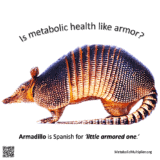Now is the time! 10 steps to build your metabolic health support group

As this pandemic fades let’s take what we’ve learnt from the vulnerable and prepare ourselves for future challenges. Let’s reduce conditions resulting from poor metabolic health like diabetes, heart disease, & obesity.(1)((1. We’ve proudly partnered with Nutrition Network’s Sarah Rice who curates the latest research in a metabolic health portal. She includes easily printable downloads for Type 2 diabetes, cardiovascular disease, obesity, Non-Alcoholic Fatty Liver Disease, and hypertension. If you value them then please leave a comment below or give her a shout on Twitter @Sarah4info.)) Starting a metabolic health support group can be easier than you think.
We humans love community, togetherness, and sharing our fears, anxieties and achievements. Now is the perfect time to gather those who seek to improve their health! Let’s learn, share, and grow together in our metabolic improvement journey.
Below I give some pointers on stepping forward and guiding others. They are based on three years of experience leading the Fountain Hills LoCarb Support Group. Prior to March 2020 we met in person, during three winter “seasons” in the Arizona desert. We found weekly meetings of 90 minutes each to be ideal, starting at 7pm local time.
1. Share successes often:
When new people come we go around the room allowing everyone to introduce themselves and tell their story. While it is repetitive for the longtime members, we all see how uplifting it is for new and old alike. Having real people, right there in the same room, sharing their success stories is incredibly powerful.
“I’ve been coming for about 12 months now. I’ve lost 60 lbs and am off all my diabetes and blood pressure medications.”
“I came because my husband was interested, and found I loved the food. Unexpectedly, my asthma symptoms have gone away.”
2. Encourage Journaling:
Initially, many come for weight loss. Accepting this we repeatedly emphasize that the real benefits of cleaning up your diet and lifestyle go way beyond that. Many value the lower inflammation, greater energy, mental clarity and consider weight loss simply a nice side effect. We encourage attendees to journal week by week. How do you feel? How have other symptoms changed?
3. Demonstrate how to track:
We teach people to use Cronometer, Carb Manager or similar apps. Most find tracking for at least a few sample days is eye opening. The importance of seeing how many carbs you are eating can’t be over emphasized. To this end I wore a continuous glucose monitor (CGM) for almost a year and constantly demonstrated readouts. I shared surprising readings and spoke about how much I learned. I found my CGM kept me from straying too far from plan at family gatherings. To demonstrate how easy and painless they are, we apply CGM’s during the meeting. If members have the financial ability to get these, we encourage them to do so.
4. Budget carbohydrates(2) :
((2. We encourage attendees to see their Doctor before starting any weight loss program. If they take any prescription medications or have a pre-existing condition it is important to work closely with their prescriber. Medications may need to be reduced quickly, requiring close monitoring.))
Give people a starter carbohydrate budget so they have a framework to think of how they consume carbs and encourage them to work towards a goal of 50gm/day gradually to lessen the impact of the fat adaptation period e.g.
- Half and half or coffee creamers – 10 g
- Green veggies or cauliflower – 10 g
- Avocado, guacamole, tomato 10 g
- Onion or garlic seasonings/side dishes 10 g
- That leaves 10g for nuts, other indulgences, more of any of the above, or other stray carbs.
5. Samples sell the lifestyle:
Potlucks really draw people in. Even those who are already preparing keto food are interested to try what others make. First timers might contribute paper products. Particularly popular dishes include the following: Cauliflower pizza. Broccoli bake with cheese. Squash soup made with coconut cream. Nut granolas. Fat bombs and keto desserts.
6. Connect with the like-minded:
Find a local restaurant or entrepreneur who will make keto meals. We had 20 people sign up for a keto special at a local restaurant. Forty showed up the evening of the event and the chef, bless him, made it work. He served smaller plates and slivers of his special cheesecake. People were just so thrilled not to have to “be different.” Initially, they may find they are the only one in their friend’s group reducing carbohydates. He addressed the group about how to ask a restaurant to “keto-fy” menu options when dining out with friends. Other groups have found a kitchen demonstration helpful.
/fountainhills006_1500-56a724b95f9b58b7d0e74b11.jpg)
7. Nurture local community:
We used flyers in gyms, articles in the local paper, presentations in the community center, a neighborhood facebook group, meetup.com and so on. Yet initially most of the core group came from referrals from a naturopath. After that it was organic by word of mouth. Flyers in gyms were met by resistance and pushback. We’d hear the “you need to burn 3,500 calories to lose a pound of fat” mentality. It was far better to nurture/feed those who came to us rather than go out seeking to convert. We’ve recently added a meet up for Arizona practitioners as well.
8. Educate & stay flexible:
Whilst I try to present an educational topic each meeting I’ve learned to limit it to about 30 minutes, 1/3 of the meeting. This allows time for general “catch up/what’s new with you” and for random questions that have come up for people. Typically I use a very simple powerpoint slide show. Initially it was on topics related to digestion, cholesterol, bad fats, etc. Over the last year we have drifted beyond Therapeutic Carbohydrate Reduction and diet to anti-aging and other aspects of metabolic health.
9. Recognize importance of community, culture & affinity groups:
When making lifestyle changes, many of us respond well to seeing “people like us” and how they are navigating. Our group has resonated particularly well with the 50-70 age group, which is similar to my own age. For purposes of our discussion I’ll call us “middle aged” since this is the middle of my support group’s age range, here in Arizona’s sun & retirement belt.
Younger folks – 30-50 year olds
Younger people (30-50) typically come once, sometimes twice. They ask a lot of questions and then go off and do their own thing. We arm them with good basics and tools, but tend not to hear of their success or otherwise. We hope they connect with other resources and improve their lives.
Middle aged (50-70)
Middle aged participants (50-70) were more likely to go and read more themselves to check and verify. Sometimes they’d come back to teach others what they’d learned. That extra level of commitment and research seemed to solidify their understanding and drive their efforts forward.
Older participants (75+)
Older participants (75+) asked the same questions each week, with a “tell me what to eat” attitude. Some never seem to grasp the concept that sugar free cookies before bed during a stressful week isn’t “cheating.” Rather it is “fundamentally throwing the breaks on fat burning.”[We’ve seen many other groups flourish around other leaders, from someone in Vyvyane Loh, MD’s’s office resonating with the Haitian community, Nick Norwitz, PhD with fellow medical students, and our leaders in the Black community.]
10. Don’t wait – just do it!
The best time to start is now. Mistakes are allowed! You will learn far more from doing than from worrying about what you might get wrong. People are forgiving, they want connection, and they are waiting for you to get things started – so just do it !
Diane Weissman is a Nutrition Network advisor, certified Nutrition Network practitioner and avid student of functional nutrition. She loves to learn and share her knowledge with those motivated to take control of their own wellness. Since 2014 Diane has been following a low carbohydrate lifestyle and now feels ten years younger than she did ten years ago. She leads the LoCarb/Ketogenic Support Group of Fountain Hills, AZ, USA which is currently available to people outside the area by Zoom. For a meeting invitation, email her at diane1030@gmail.com










